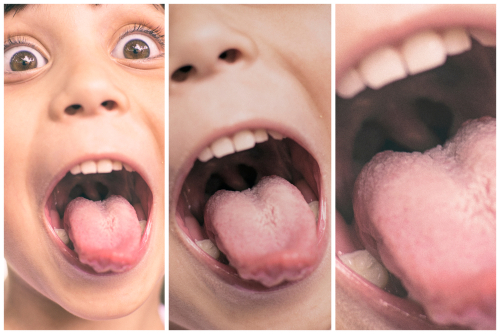What is Oral Thrush in Babies and How Can I Prevent It?
What is Oral thrush?
Candida albicans, a yeast-like fungus, causes oral thrush. Candida can normally live in our mouths, intestines, and genital areas without causing problems, but it can also grow quickly and cause discomfort for you and your baby.
Oral Thrush Symptoms
If you look inside your baby's mouth and notice white patches on the tongue that don't rub off or disappear, this could be a sign of thrush. Because thrush can be painful, you may notice changes in their feeding habits. It is common for babies to become fussier while nursing, bottle-feeding, or sucking on a pacifier or thumb.
It is normal for yeast organisms to be found in various parts of the body. They usually have no symptoms. Symptoms may occur if there is more than usual, or if the immune system is unable to cope with the levels.
Candida yeast can also cause diaper rashes and rashes in other moist areas, such as under the chin. Breast-feeding mothers' nipples may be affected. It can be extremely vexing, but it is treatable.
Candida symptoms can appear in newborns at birth or shortly thereafter. Thrush is most common in the first few weeks or months of life. If a breast-feeding mother's nipples are infected, the infection may be passed on to the infant.
The most common oral fungal infection in infants and children is oral thrust is fluconazole oral capsule. It is usually not serious, but it can be uncomfortable and cause feeding difficulties. There is treatment available.
Causes
Most of the time, a small amount of Candida fungus lives in the mouth. The immune system and other types of germs that normally live in the mouth keep it in check.
When the immune system is compromised, the fungus can grow and cause sores and lesions in the mouth and on the tongue.
Babies may develop oral thrush because their immune systems have not yet matured. They have a lower resistance to infection.
Because antibiotics reduce the levels of healthy bacteria in the mouth, an oral thrush infection can occur after treatment. This allows fungus to multiply.
Symptoms
Symptoms can appear unexpectedly. They may include white patches on the roof of the mouth, inside the cheeks, and on the tongue, as well as red tissue that bleeds easily, redness around the patches, the patches being painful, the corners of the mouth cracking, and white patches that look like milk that cannot be wiped away.
Diagnosis
A doctor will examine the infant to look for signs of thrush. They may examine a swab or sample of infected tissue under a microscope at times. If a Candida infection is found, the sample may be cultured to confirm the diagnosis.
Treatment
If Candida is diagnosed, the doctor will prescribe an appropriate treatment. Oral thrush in infants usually goes away within two weeks, and parents or caregivers may be advised to keep an eye on the infection without using medication.
A doctor may prescribe drops or a gel that must be spread around the inside of the mouth rather than just placed on the tongue. If the infant is breastfeeding, the mother's nipples may need to be treated concurrently to prevent the infection from spreading. Because oral thrush can interfere with feedings, the pediatrician should be contacted if symptoms persist.
Prevention
An expectant mother should see a doctor if she develops a vaginal yeast infection. If it does not go away, it may be passed on to the baby during birth. Vaginal itching and a cheesy white discharge are symptoms.
Women who experience nipple discharge or pain while breastfeeding should also notify their doctor so that they can be tested for a yeast infection in the nipples. This can also be transmitted to a nursing infant's mouth.
Use breastpads without a plastic barrier while breastfeeding, as this can promote Candida growth.
If bottle nipples and pacifiers are used, make sure they are sterile. Some studies have found Candida on pacifiers, particularly latex pacifiers.




Comments
Post a Comment